Still Time for a Good Novel
Students are almost back on campus, but here are some book suggestions from professors to take you through the next few weeks.
Just in time for the last hurrah of summer, Columbia News asked several professors what books they have read recently or will be reading on their final—or first—getaway before school starts. Here are their suggestions.
Migrants on My Mind
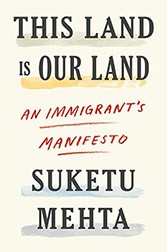
JAMEEL JAFFER, director of the Knight First Amendment Institute
I’m reading Suketu Mehta’s This Land is Our Land: An Immigrant’s Manifesto, which is a powerful and gratifying rejoinder to political leaders in the United States and elsewhere who are stoking fear of migrants to consolidate their own power. Demagogues the world over cast migrants as a threat, but Mehta makes a compelling case that open societies are threatened not by migrants, but by the fear of them. He also emphasizes the West’s complicity in the military disasters and environmental destruction that have turned so many people into refugees. Migrants are here, Mehta says, because we were there. There’s more truth to that insight than most of us usually care to admit.
At the Knight Institute, we’re doing a lot of work on issues at the intersection of immigration, technology, privacy and free speech. Two years ago, we helped expose border agents’ practice of searching travelers’ cellphones and laptops without probable cause, and more recently we supported challenges to the government’s selective use of the immigration laws to silence immigrants’ rights advocates. Over the past few months, we’ve been focused on the State Department’s new policy requiring visa applicants to register their social media handles with the U.S. government on their application forms. The registration requirement is the linchpin of a far-reaching surveillance regime designed to permit the government to review immigrants’ speech and associations in real time, including after their entry into the United States.
Mehta’s book supplies a useful frame for our work. We tend to think of this work as a defense of the freedoms of speech and the press, and of the right to privacy—and it is. But it’s also an effort to resist the dehumanization of migrants and the suppression of their voices and civic participation, and to resist the effort to deny them rights that are crucial to their flourishing, and to ours.
Why Not a Western?
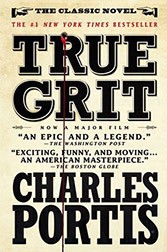
RIVKA GALCHEN, a professor in the Writing Program at the School of the Arts
This summer I'm returning to the magnificent, companionable and ambling-yet-compact novels of Charles Portis. Portis is probably most famous for True Grit, his "slant Western" about a 14-year-old girl, Mattie Ross, avenging her father's murder. The book is narrated from her point of view and tells of her setting off with two reluctant bounty hunters in search of the near-mythical Tom Chaney, whose startling take upon being found is a childish, “Why do these things always happen to me?” Somehow the genuinely brutal novel is also comic and emotionally real, and I have cried every time I get to the end.
All of Portis's novels are superior, so I'm keeping them all close at hand—The Dog of the South, Norwood, Masters of Atlantis and Gringos. I last read them about six years ago, when I was pregnant and very nauseous, and they were the only thing engaging enough to make me feel better. Portis worked for many years as a newspaper reporter, writing for several different papers in his native Arkansas, and later, for a time, at The New York Herald Tribune. Maybe that is where he developed his ear for dialogue. Or maybe that was always going to be part of who he was as a writer. His novels all have a strong arc—someone, or something, is being sought—and yet also he is the master of random thought and longing.
Experiencing Other Worlds
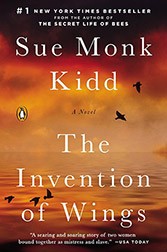
ROBIN BELL, a professor of marine geology and geophysics
I go through phases where I must read nonfiction in my need to learn all the time, but I also like to dive into fiction to experience other worlds. This summer I have a little of each on my list. A friend recently recommended The Invention of Wings by Susan Monk Kidd, which takes place in the home of wealthy slave owners in the early 1800s in Charleston, South Carolina. The novel is based on the lives of sisters Sarah and Angelina Grimké, two of America’s earliest abolitionists and feminists, told in parallel with the story of a slave girl who grew up in their house. The book will give new meaning to the streets and buildings of Charleston when I sail there late in August.
I dream of finding a story that wraps the climate crisis into a narrative that is not a downer because I am hopeful that we will adapt and survive. Three young women from the New York City Mayor’s Office of Resiliency, who are working to prepare New York for the climate challenge, recommended Ben Lerner’s novel, 10:04. It is set in the city around Hurricane Sandy, and makes you think about different futures.
I love to swim, so in the spirit of adventurous swimming, I am hoping to read Lynne Cox’s Swimming to Antarctica. My graduate student swam off Ross Island near Antarctica, but headed north when they had to cut a hole in the sea ice. I hope to enjoy freezing water through Cox’s eyes.
Reading to Write
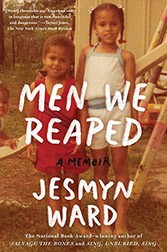
JOSEF SORETT, a professor of Religion and African American Studies and director of the Center on African American Religion, Sexual Politics and Social Justice
It’s true, if a tad clichéd, that summer is writing time for faculty. It is equally true that summer is a time for reading, as this is what most writing requires. So my reading (and writing) run in several directions at once.
On the heels of teaching my Black Memoirs seminar, I recently read Jesmyn Ward’s Men We Reaped and Kiese Laymon’s Heavy. The former was on my 2019 syllabus, the latter was not. Both are beautifully written accounts of growing up in Mississippi. Each uniquely, and with great insight, tackles pain, violence and death. And both capture the persistence of the South as an ancestral (and actual) home.
I am rereading James Baldwin’s first book, Go Tell It on the Mountain, in preparation for a National Endowment for the Humanities seminar on the Religious Worlds of New York. This classic text is a recurring read for me for many reasons, not the least being because it does so much work for a scholar of religion in America. The Great Migration. Black churches in the rural south. Storefront churches in Harlem. The art and politics of African American preaching. Gospel music. It’s all in there.
I have also been reading a range of other more traditional academic monographs that are related to my current book project, The Holy Holy Black: Ironies of an American Secular, which examines the centrality of Christianity to black identity and social life. The first chapter focuses on slave narratives, so I’ve been looking at Henry Louis Gates’ Figures in Black and (Columbia colleague) Saidiya Hartman’s Scenes of Subjection, both of which I’ve read before. For the first time, I’ve been working through Ronald Judy’s Disforming the American Canon.
My Paradise of Books
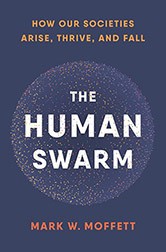
AZRA RAZA, the Chan Soon-Shiong Professor of Medicine and Director of the Myelodysplastic Syndrome Center
I have a reverence for reading. I am an unabashed lover of hardbound books; like Jorge Luis Borges, I imagine paradise to be a kind of library. I read books, mark and treasure them, and consult many over and over. This summer, here is what I am reading:
The Human Swarm by Mark Moffett has a startling thesis—that what has allowed humans to conquer the planet is our unique ability to be comfortable around strangers. Being a lifelong admirer of ants, I am delighted by Moffett’s ingenious notion that we resemble social ants more than chimpanzees, with whom we share 98 percent of our genes. Deep Medicine by Eric Topol states its central thesis in the subtitle, “How artificial intelligence can make health care human again.” By performing the scutwork, AI will free up doctors’ time to engage in more face-to-face interactions with patients. Other science books on my list are Yuval Noah Harari’s 21 Lessons for the 21st Century and John Carreyrou’s Bad Blood.
I also recommend George Packer’s Our Man, his fascinating, occasionally vexing biography of Richard Holbrook, the larger-than-life diplomat who personified the idealistic notion that suffering in far-flung places required America to intervene on humanitarian grounds. Two heartbreaking books about immigration are Valeria Luiselli’s Tell Me How It Ends: An Essay in 40 Questions and her novel, Lost Children Archives, which examine the trials and tribulations faced by Latin American children seeking asylum in the United States. And the heartrending The Only Story by Julian Barnes is about a man who looks back a half century, when he was ravished by a married woman 30 years older than he was, and concludes that the experience was what mattered most in his life.
Detective Stories, Thrillers and More
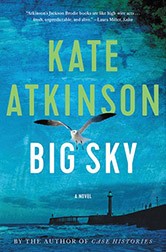
JENNY DAVIDSON, a professor in the Department of English and Comparative Literature
In preparation for the recent release of Kate Atkinson’s fifth book about private detective Jackson Brodie, The Big Sky, I reread installments one through four and was blown away all over again by the power of the stories she tells about love and loss. I’m looking forward to reading Craig Laurance Gidney’s A Spectral Hue, De’Shawn Winslow’s debut novel In West Mills and Vasily Grossman’s Stalingrad, the prequel to Love and Fate, now published in English for the first time.
I’ve had a great run of reading recently, and can single out some exceptional books from that list: Nafissa Thompson-Spires’ Heads of the Colored People is one of the most remarkable books I’ve ever read. Yiyun Li’s nonfiction account of her hospitalization for depression, Dear Friend, From My Life I Write To You in Your Life, is riveting, perhaps more so than Where Reasons End, the fictional philosophical dialogue she published earlier this year, a response of sorts to the suicide of her own teenaged son.
If you like crime fiction and you’re not already reading Jane Harper, please make it a priority; I also enjoyed Ron Corbett’s second Frank Yakabuski novel, Cape Diamond. Recommendations in speculative fiction include Tade Thompson’s brilliant Afrofuturist trilogy, S. A. Chakraborty’s The City of Brass and its sequel, The Kingdom of Copper, second books by exciting newcomers Rebecca Roanhorse and Zen Cho and the final installment of Katherine Arden’s immersive Winternight trilogy, set in a magical alternate version of 16th-century Russia.
Neanderthals, Nobel Prizes and Good Food
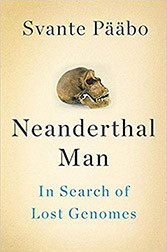
VINCENT RACANIELLO, the Higgins Professor of Microbiology and Immunology
As both a scientist and science communicator, I love reading how others explain the wonder of discovery. My summer reading list is replete with such titles, but there is also a guilty pleasure or two. I’m in the midst of reading Neanderthal Man by Svante Pääbo, the story of how the Neanderthal genome sequence was done. You might think that’s a dry subject, but it’s riveting and told very personally. Pääbo recounts how he got interested in ancient DNA, and how he developed the technology needed to work with old bones. Thanks to Pääbo’s work, we now know that a small percentage of our DNA came from Neanderthals. It’s rare that a scientist can write so well for a general audience.
Next on my list is Nobel Prizes and Life Sciences by Erling Norrby, a Swedish virologist who has been on Nobel Prize-selecting committees for many years. This book is the backstory of how Nobel winners are chosen. In Explain the World, physicist Steven Weinberg—himself a Nobel Laureate—covers the origins of science, from the ancient Greeks to the modern revolution.
For something completely different, Gray Day is FBI agent Eric O’Neill’s account of his undercover mission to expose one of America’s most notorious spies, Robert Hanssen. Finally, Andrea Camillieri is my favorite author of crime fiction. I’ve read all his books, which take place in Sicily and are concerned both with solving crimes and eating well. His latest is The Overnight Kidnapper.